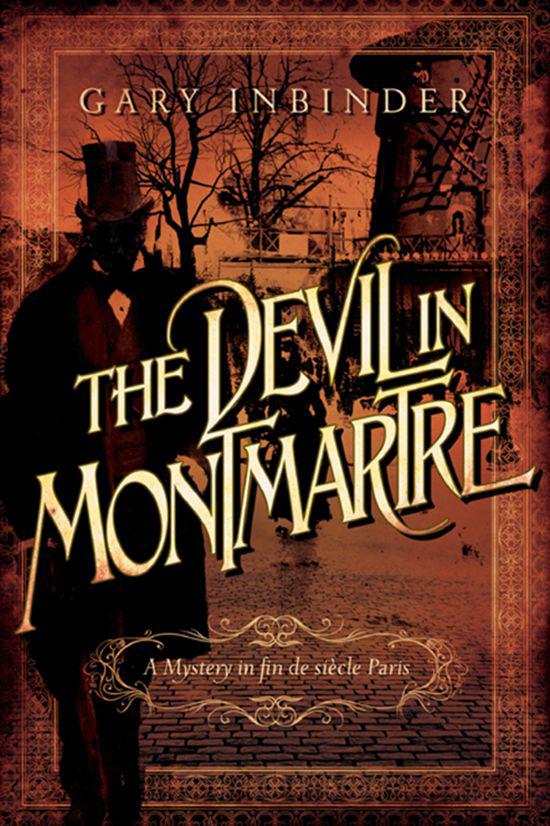
The Devil in Montmartre
A Mystery in Fin de Siècle Paris
کتاب های مرتبط
- اطلاعات
- نقد و بررسی
- دیدگاه کاربران
نقد و بررسی

October 20, 2014
Has Jack the Ripper crossed the Channel? Insp. Achille Lefebvre, “a fervent advocate for scientific methods of detection,” tries to find out in this uneven mystery from Inbinder (Confessions of the Creature). Early in the morning of October 15, 1889, two Paris night soil collectors fish a female torso out of a Montmartre cesspool. The victim is later identified as a can-can dancer at the Moulin Rouge who disappeared a few days earlier. The savagery of the killing raises fears that the Ripper has resumed his slaughter of women and increases the pressure on Lefebvre. The autopsy reveals the dancer had undergone a recent procedure that casts suspicion on an eminent surgeon, while a small shoe print at the scene of the body’s discovery may be that of artist Toulouse-Lautrec, who lives in Montmartre. Plenty of precise period detail helps drive the plot toward a resolution that will disappoint even readers who have been engaged until then. Agent: Lukas Ortiz, Philip Spitzer Agency.

November 15, 2014
A police detective uses science to solve a grisly murder in 19th-century Paris.In 1889, Boulevard de Clichy feels like the center of the world. Crowds of tourists already in Paris for the Universal Exposition to marvel by day at sights like M. Eiffel's wondrous tower flock at night to Montmartre to watch the scandalous new dancers at the Moulin Rouge, where Virginie Menard dances cancan under the watchful eye of Maurice de Toulouse-Lautrec. In his atelier, the artist has seen more of the young dancer than the glimpse of undies she flashes in the club. Nevertheless, Lautrec never misses a chance to sketch one of his favorite models. So when Virginie goes missing, he's one of the first to notice. Not far behind is American artist Marcia Brownlow, whose fascination with Virginie enrages her lover, heiress Betsy Endicott. But the police are as indifferent to the disappearance as the artists are concerned-until the headless body of a young woman is found in a cesspit. Old-school detectives like Inspector Rousseau rely on a network of snitches. But Chief Inspector Feraud has faith in modern young inspector Achille Lefebvre. And Lefebvre has faith in evidence. With the help of crime lab pathologist Alphonse Bertillon, Lefebvre examines the crime scene, casting footprints in the mud and dusting for fingerprints. As the yellow press blames the crime on a conspiracy of Jewish bankers and Rousseau takes aim at the art community, Lefebvre seeks to unmask the real killer, who has autographed his work as surely as Lautrec signs his. Essayist Inbinder's mystery debut shows Montmartre at its atmospheric best-inhabited by characters as diverse and devious as Paris can offer.
COPYRIGHT(2014) Kirkus Reviews, ALL RIGHTS RESERVED.

December 1, 2014
Artist Marcia Brownlow is in Paris to exhibit her paintings at the 1889 Universal Exposition and is accompanied by her lover, wealthy American Betsy Endicott. Despite Marcia's terminal illness, they're enjoying their time in Paris--until Betsy learns of Marcia's interest in beautiful model and Moulin Rouge cancan dancer Virginie Menard. Full of jealousy and remembering Marcia's past infidelities, Betsy begins to find pleasure in the attentions of Sir Henry Collingwood, an English gynecologist and amateur artist. When Virginie is found dead, Henry becomes a suspect along with the painter Toulouse-Lautrec and Jojo, the acrobatic circus clown. Fortunately, Insp. Achille Lefebvre is on the case. His pioneering detecting methods of crime-scene photography and fingerprint discovery will prove invaluable in solving the crime. VERDICT Inbinder (The Flower to the Painter; Confessions of the Creature) depicts a fascinating period in Parisian history with excellent detail, and Inspector Lefebvre's techniques are intriguing, as they show the advent of modern forensics. However, Lefebvre's theories all work out a bit too neatly, and he never for a moment succumbs to any of the red herrings thrown in his path. Still, immersion in the absinthe-tinged haunts of late 19th-century Paris are worth the read.
Copyright 2014 Library Journal, LLC Used with permission.

November 1, 2014
Did Henri Toulouse-Lautrec murder his former lover and model, beautiful Moulin Rouge dancer Virginie Menard? Just after Virginie goes missing, her nude torso is found in a Montmartre sewer, and the search for her killer is on. Inspector Achille Lefebvre of the Paris Sret', a new breed of detective who relies on scientific discovery, discounts the murder as the work of Jack the Ripper and believes Lautrec is being framed, as he uses fingerprints in pursuing his investigation. The victim also had been admired by other artists, among them visiting American impressionist Marcia Brownlow, who had once before sketched Virginie and was so entranced at seeing her again that her longtime companion, heiress Betsy Endicott, felt pangs of jealousy. Meanwhile, Brownlow's tubercular condition worsens, and tensions arise in the Sret' between the old and new guards in working this potentially inflammatory case. Inbinder (The Flower to the Painter, 2011) evokes the Paris of 1889 so well that his overly neat climax can be forgiven in this colorful historical mystery.(Reprinted with permission of Booklist, copyright 2014, American Library Association.)

























دیدگاه کاربران